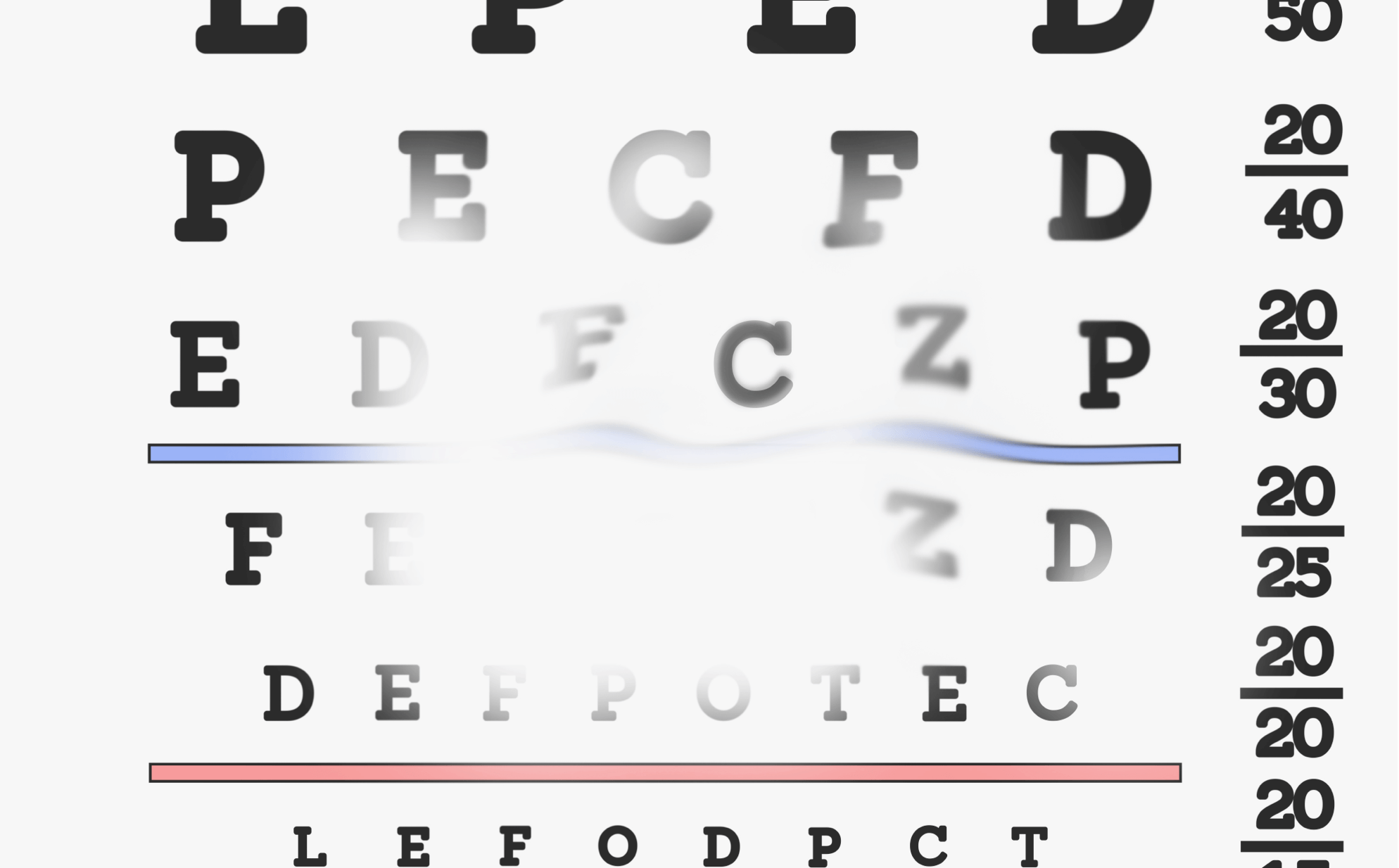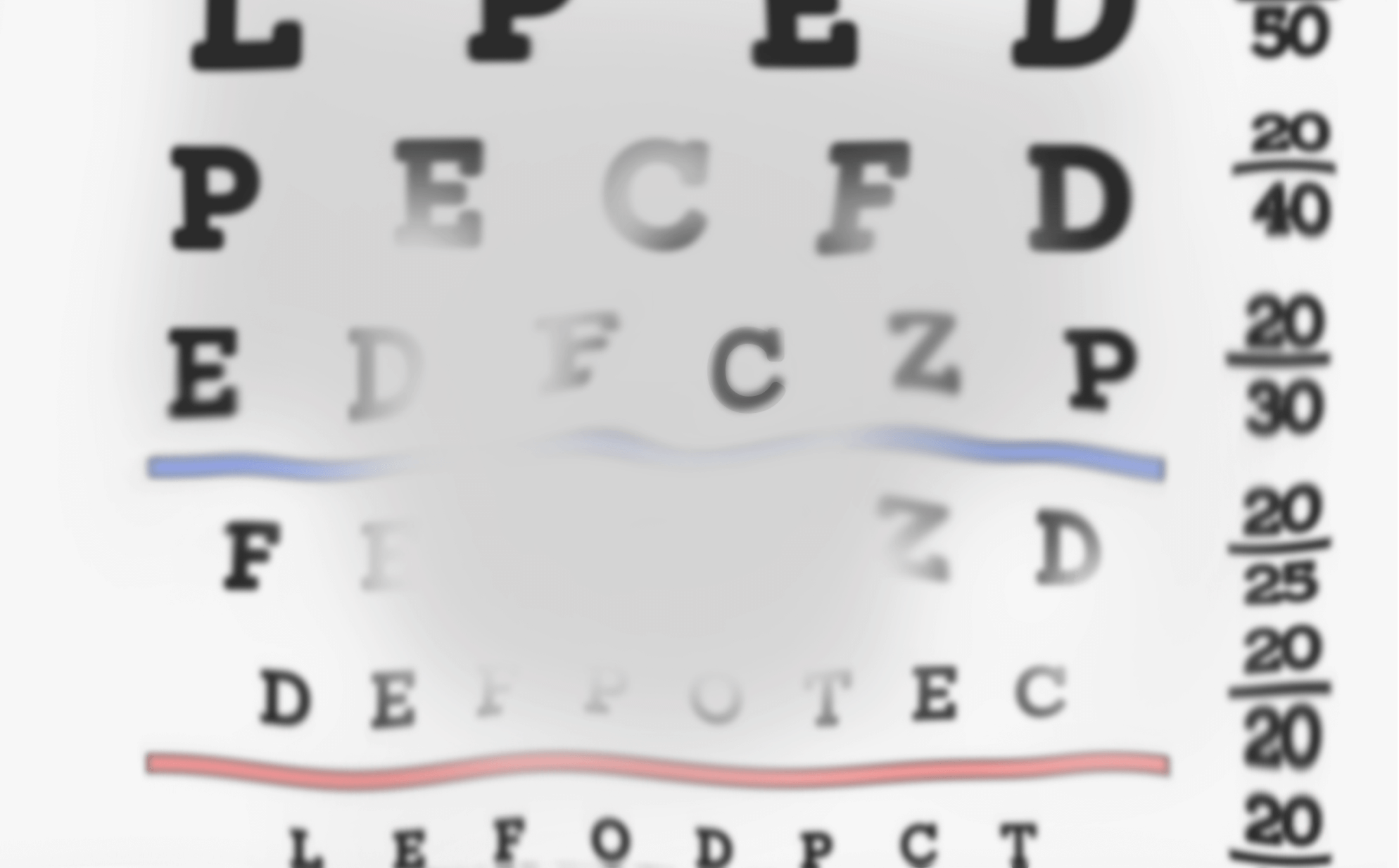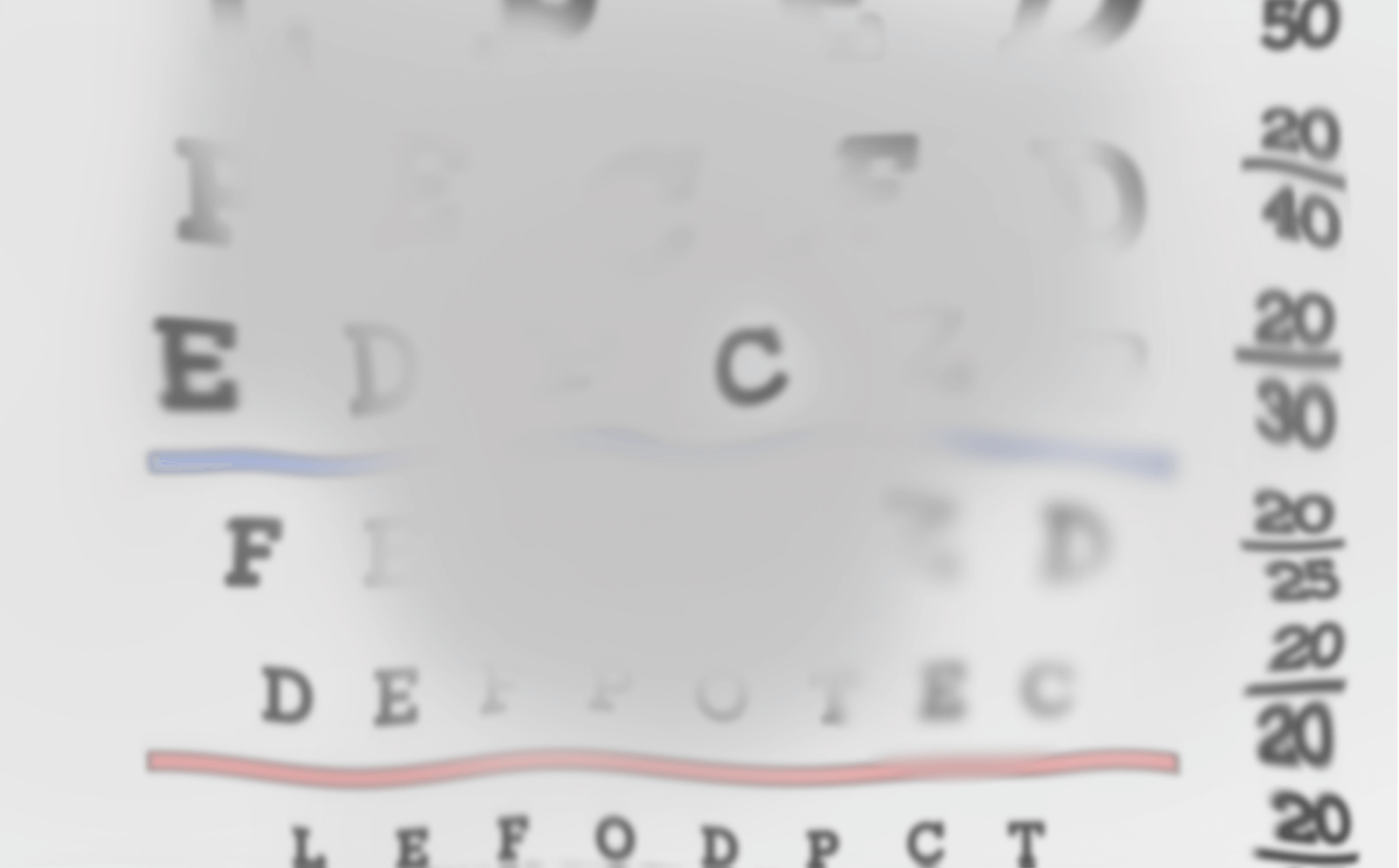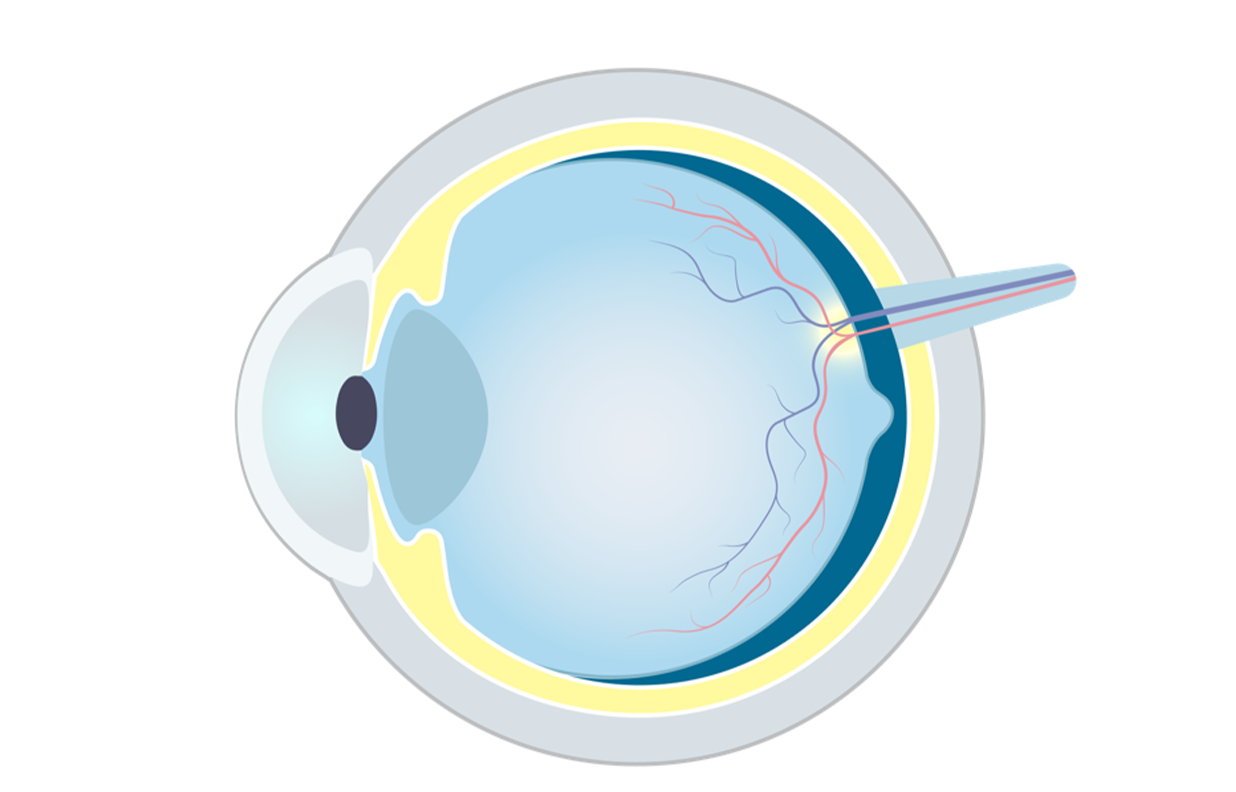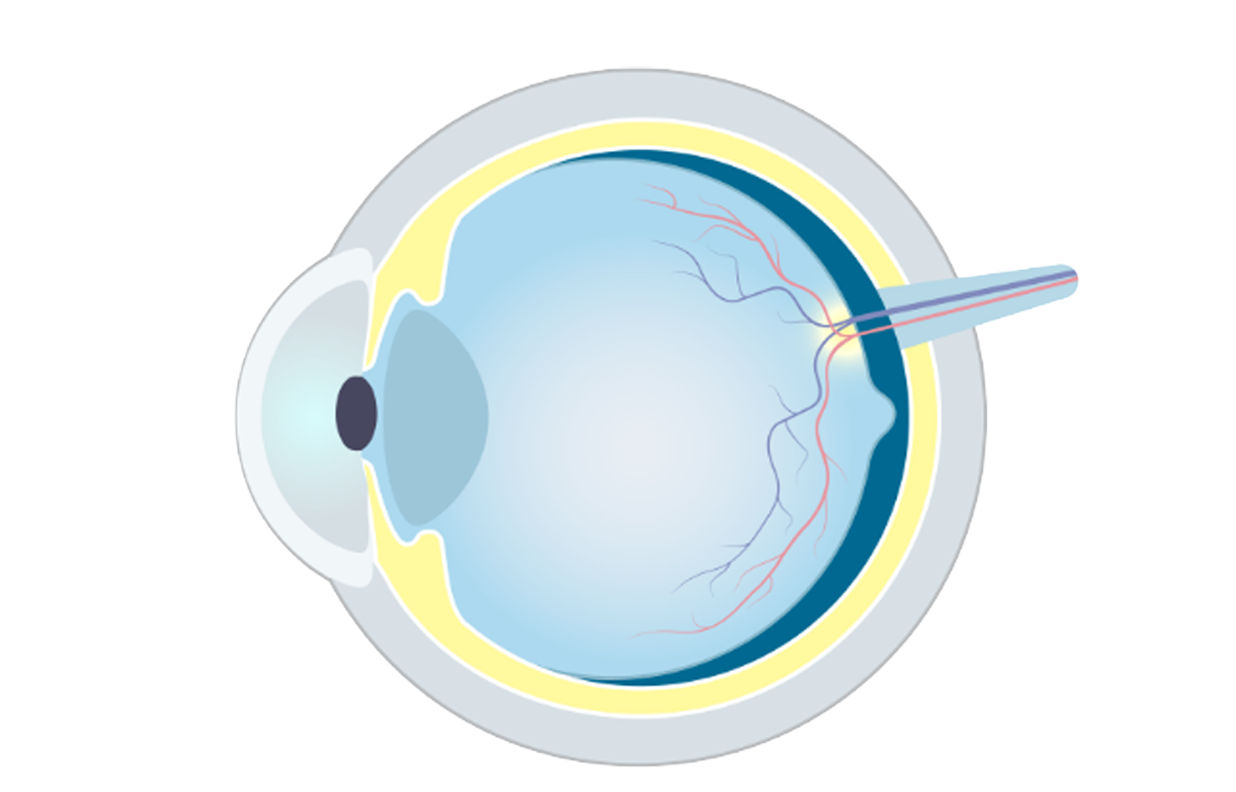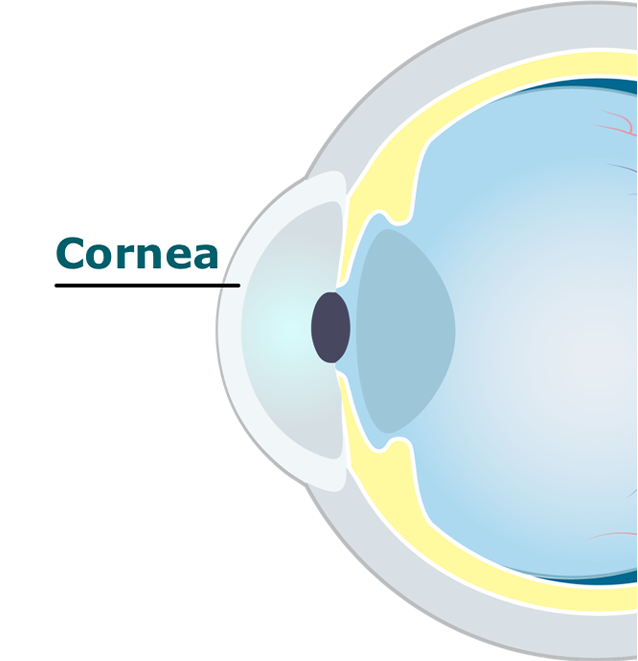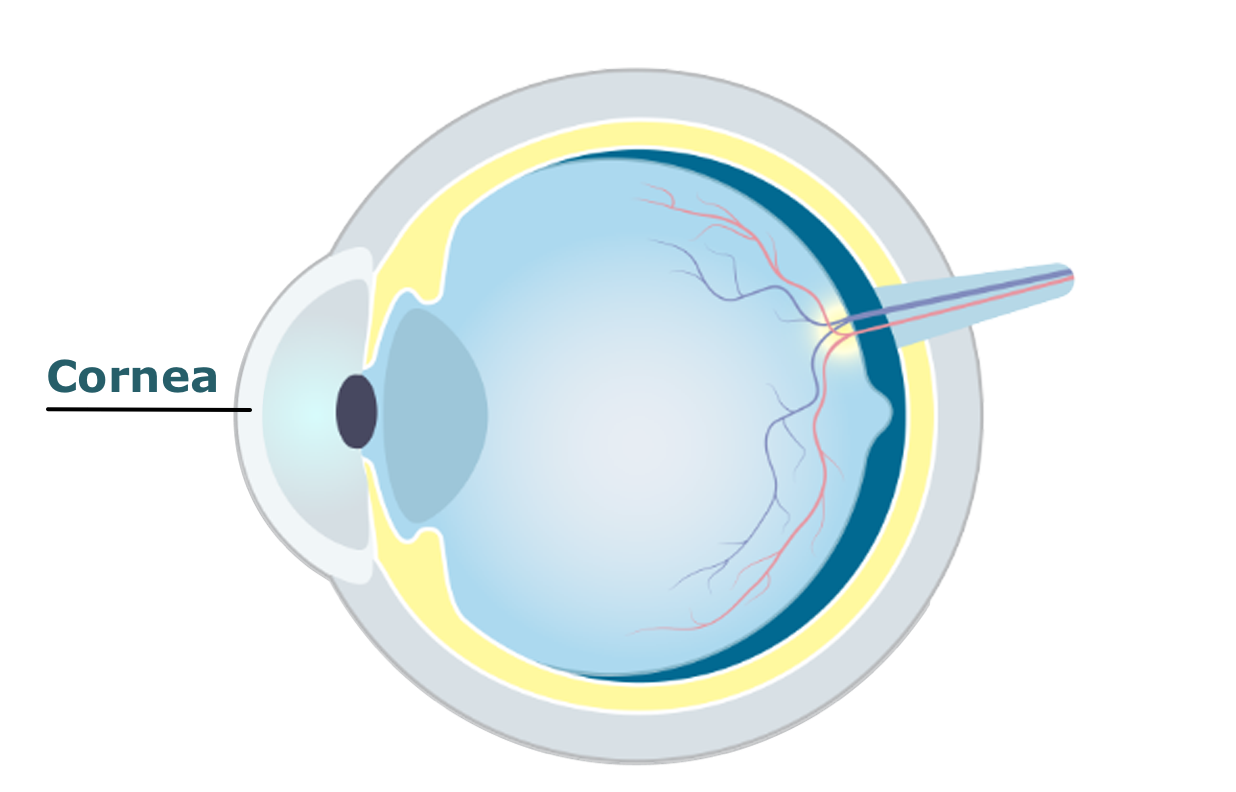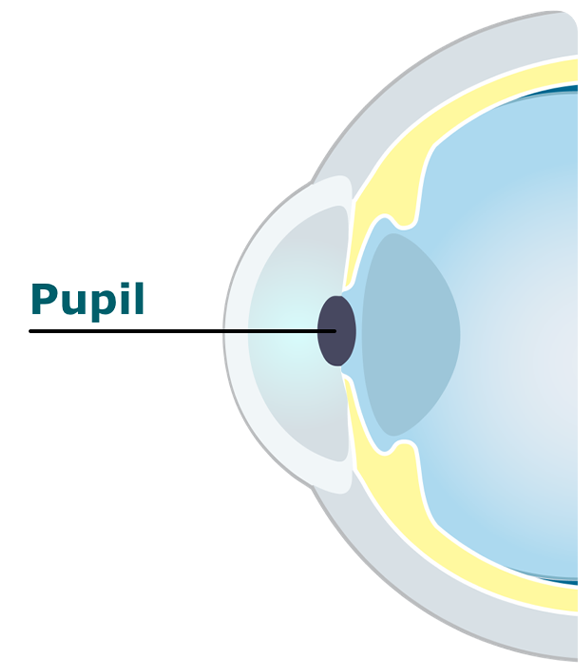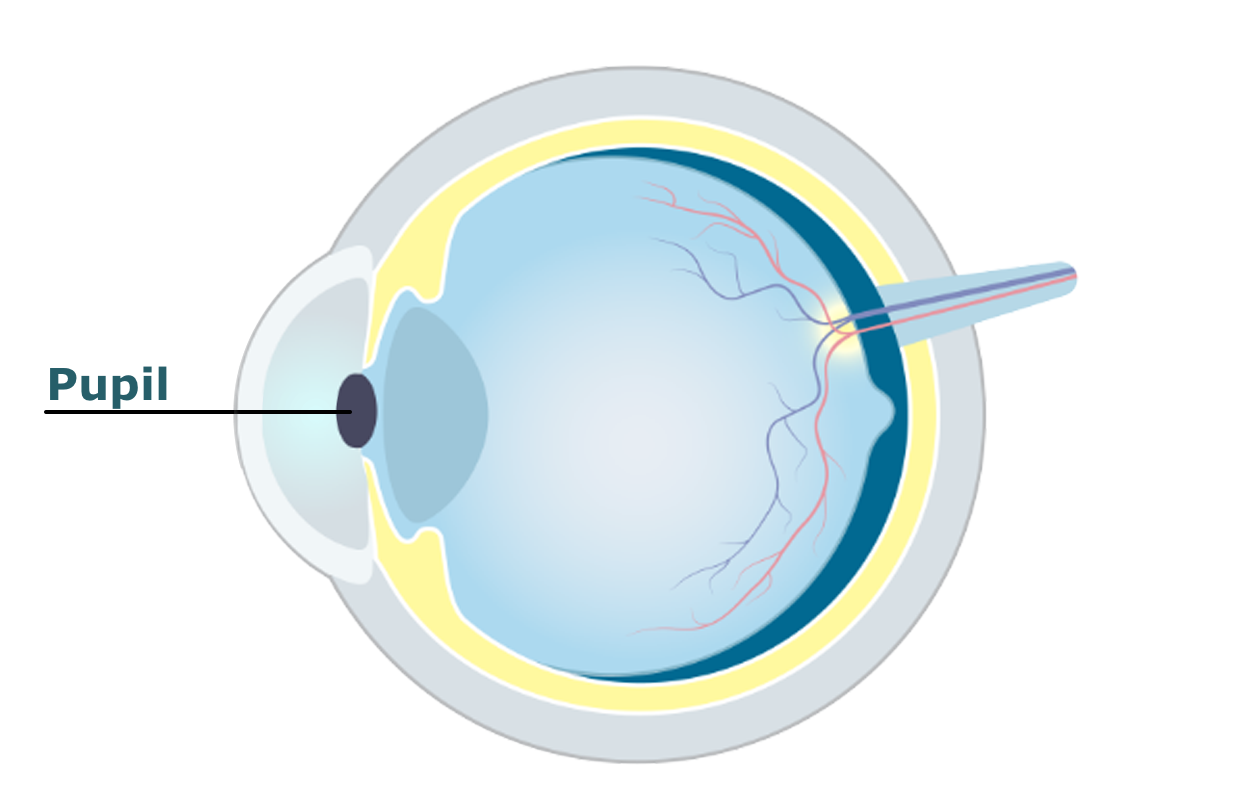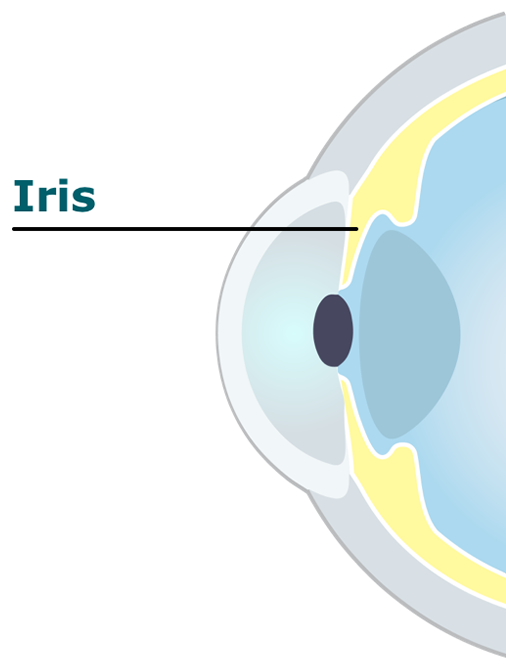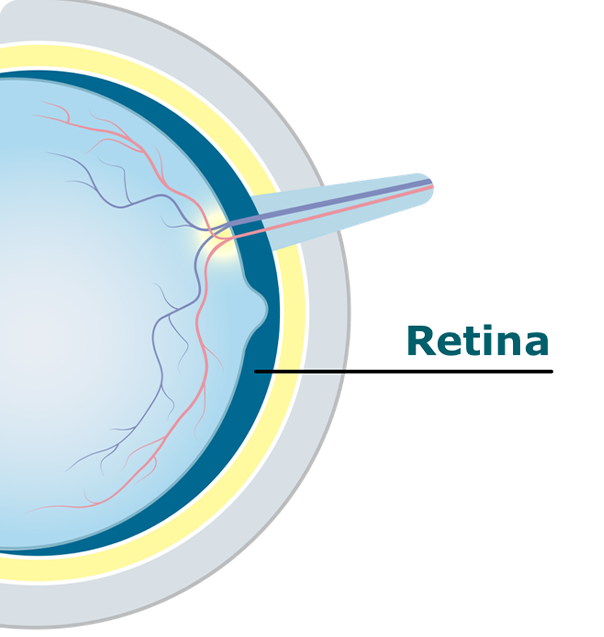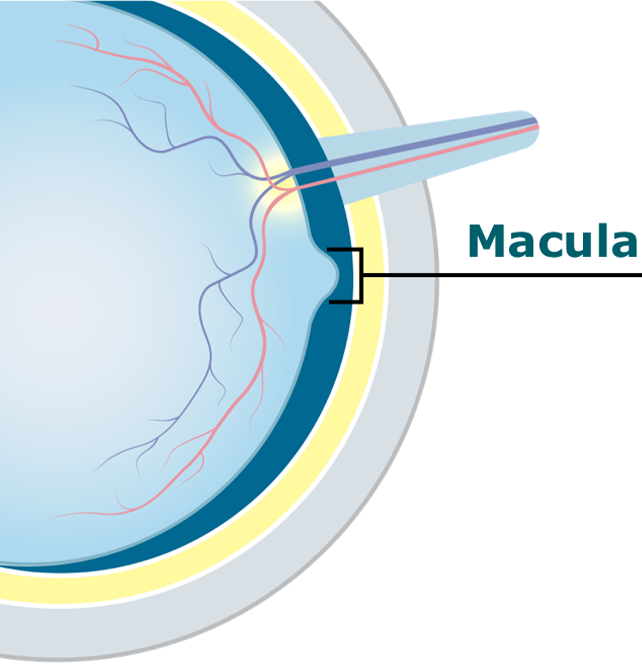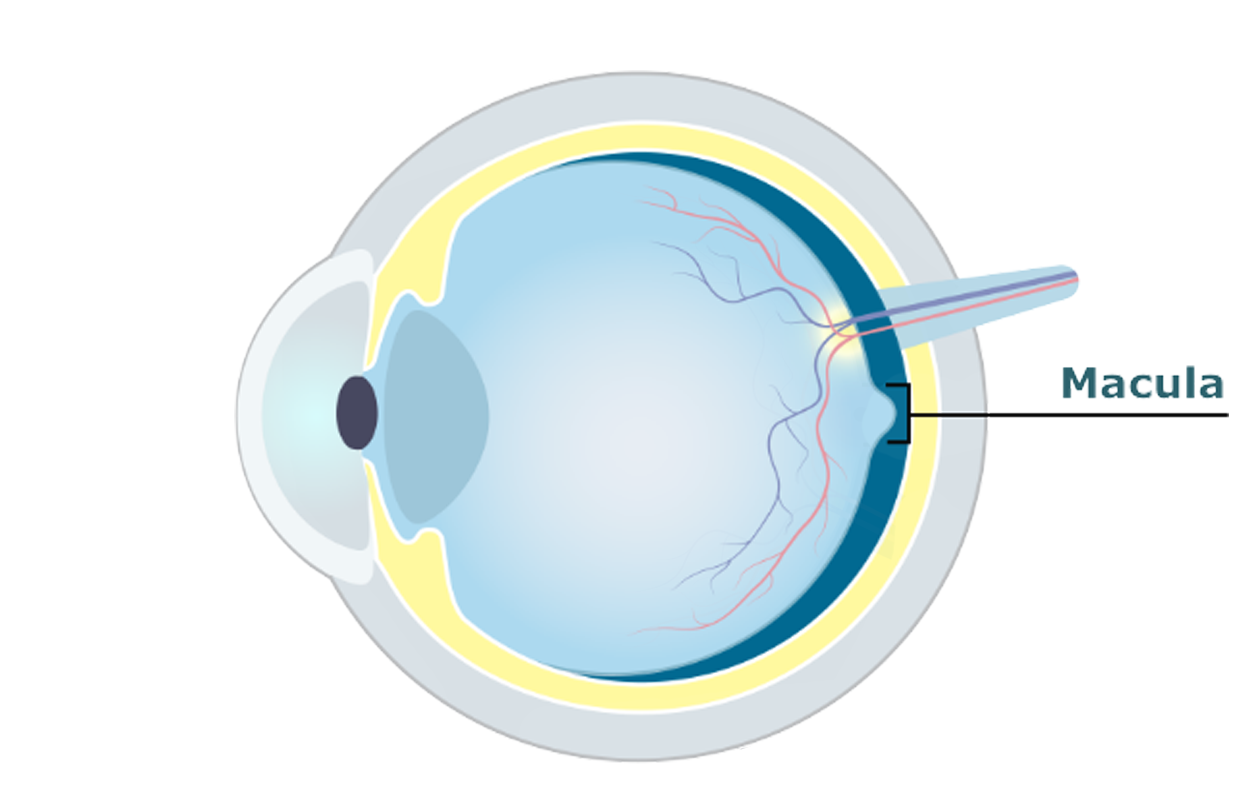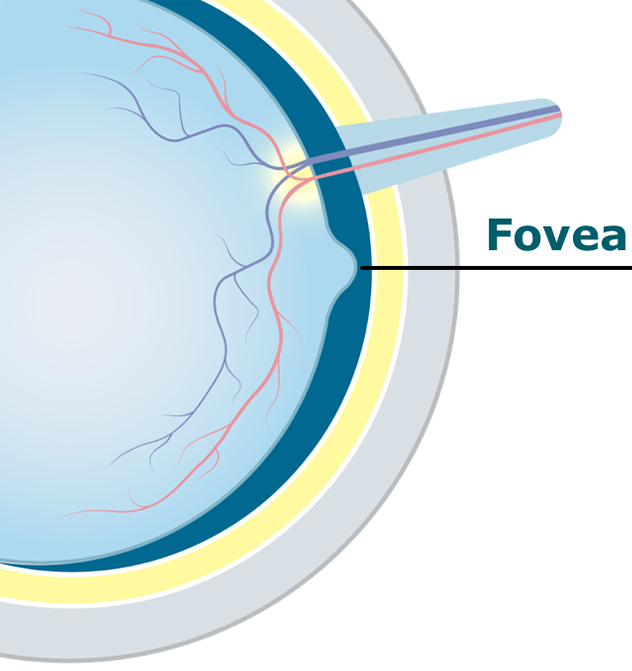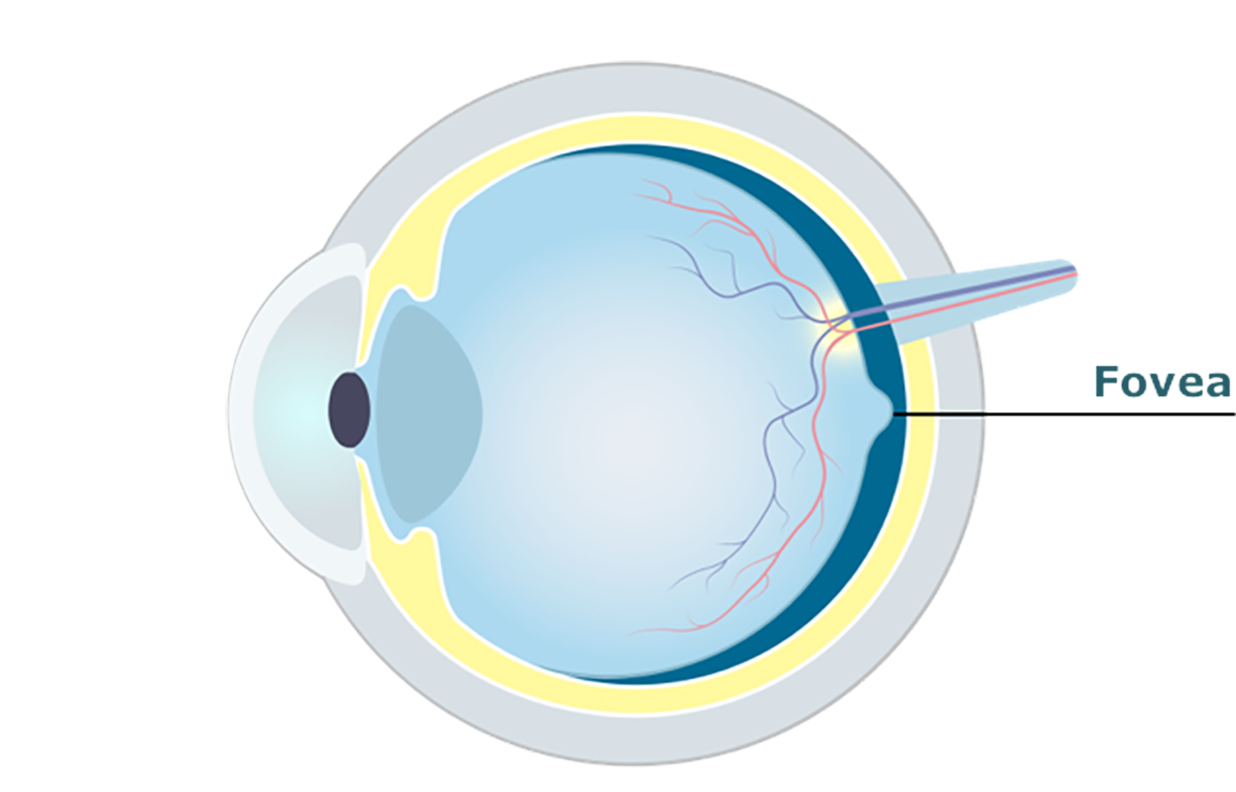What is Geographic Atrophy (GA)?
GA is irreversible, it’s important to catch it early.
— Henry Winkler
GA in focus
GA is an irreversible eye disease that is the dry, advanced form of age-related macular degeneration (AMD). Watch this video to learn more about what’s going on in your eye when you have GA.

View transcriptClose transcript
Close your eyes.
Let them adjust.
Now, open them.
Notice how the world around you gets clearer as the light pours in.
Your eyes help you navigate the world and connect you with the people and things you love, so it’s important to understand what’s happening if you experience vision changes.
Geographic Atrophy, or GA, is an advanced form of age-related macular degeneration, or AMD.
This condition can lead to permanent and irreversible vision loss.
To understand how this happens, I want you to think about the palms of your hands.
When you’re able to see all the crisscrossing lines and details it’s because of a part of your eye called the retina.
It turns light—and all of the colors and the shapes it captures—into signals that your brain can understand.
Your retina is located in an area that lines the back of your eye.
Within your retina is a tiny section called the macula. It helps you to process all the fine details of your world—like the lines on your hands—clearly.
It’s the retina—and more specifically the macula—where GA affects your vision the most.
If you’re early in your GA journey, the effects may not be noticeable now, but over time, those details, like the wrinkles on your fingers and the lines across your palms, could start to look hazy or blurred.
Many things can increase your risk of getting GA, such as your age and lifestyle.
Your family history can make up to seventy percent of your risk of getting GA.
When you have GA, excessive debris deposits called drusen can build up in your retina.
When your body recognizes this drusen buildup, it can send your immune system into overdrive, leading to inflammation—and eventually—the destruction of healthy cells in your macula.
While this damage may start small, it progresses, as cells continue to die off, forming larger patches, known as lesions, which grow and spread across the retina.
If you’ve been living with GA, you might notice that driving at night and reading have become harder.
Straight lines, like telephone poles or those on a piece of paper, may have begun to look wavy or distorted. These are all signs that GA is progressing.
As GA continues to progress, you may notice a blurry spot that appears in the center of your vision.
As the lesions caused by GA grow larger, its effect on vision worsens, and can eventually lead to permanent vision loss.
If you are experiencing symptoms of GA, know that you aren’t alone: GA affects nearly one million people across the United States and approximately five million globally.
Finding resources and a supportive community will be an important step in your GA journey.
Play an active role and stay involved with your vision to help you adapt to life with GA.
Visit eyesonGA.com for tips, information, recipes, and helpful home ideas for living with GA.
Every person’s experience with GA is unique. Speak with your doctor about questions you may have regarding GA and its symptoms.
How GA impacts vision*
“Signs may be subtle at first, but GA gets worse over time and cannot be reversed. If you've been diagnosed with AMD and notice vision changes, don’t wait—talk to your eye doctor about GA today.” — Henry Winkler
TapHover over the images to see some signs and symptoms of GA:


Difficulty seeing in the dark


Hazy or blurred vision (less sharp or detailed)


Straight lines appear wavy


A small but growing blurry spot in the center of vision


Colors seem dull or washed out
*For illustration purposes only. Vision impairment due to GA may vary.
See how GA changes vision over time
Click to experience the progression of GA over time.‡
See how GA changes vision over time
Swipe to experience the progression of GA over time.‡
AMD and GA§
Early/intermediate age-related macular degeneration (AMD) can lead to GA.
Recognizing the differences between early/intermediate AMD, wet AMD, and GA can help you have better conversations with your eye doctor. It’s important to know that your eyes are different. One eye may have AMD symptoms while the other may not. Click on the tabs below to learn more about each eye disease.
Early or intermediate AMD is an eye disease primarily found in people over the age of 50. When you have this condition, parts of your macula begin to thin.

Early/intermediate AMD can lead to GA, wet AMD, or both GA and wet AMD
GA can develop as AMD progresses and becomes more advanced. people over the age of 50. When you have this condition, parts of your macula begin to thin.
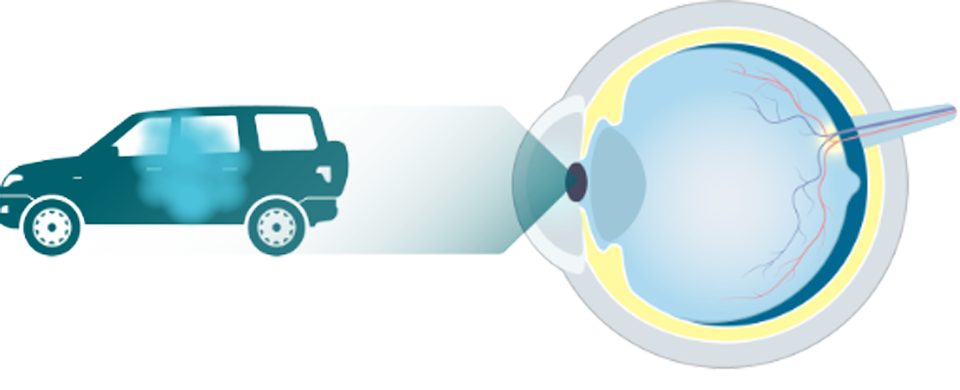
Early or intermediate AMD is an eye disease primarily found in people over the age of 50. When you have this condition, parts of your macula begin to thin.

§Images are for illustrative purposes only. Drawing is not a true cross-section.
Understanding the eye§
Your eyes can help you navigate the world and connect with the people and things you love.
Vision happens when your eyes turn light into signals your brain can recognize.
Learning about how the eye works will help you understand how eye diseases like GA, an advanced form of dry age-related macular degeneration (AMD), affect the eye.
§Images are for illustrative purposes only. Drawing is not a true cross-section.
If you have GA, your retina and macula can both become damaged as you age, which can lead to permanent vision changes.
How GA develops in the eye
Risk factors
Family history (including genetics), aging, history of cigarette smoking, high blood pressure, obesity, low physical activity, and UV exposure can increase your risk of getting AMD, which may lead to GA.
Drusen
These risk factors can lead to a buildup of debris in the eye's retina. This debris is called drusen and is made up of proteins and fats that the body no longer needs.
Overactivation of the immune system and inflammation
This buildup of drusen can contribute to an overactivation of parts of your immune system in the eye.
This leads to inflammation, which contributes to your body mistakenly damaging and destroying healthy cells in a part of your retina called the macula.
While this damage in the eye may start small, cells continue to die off and form larger patches, known as lesions, that get bigger and spread across the retina.
As these lesions grow larger, GA worsens and can cause permanent vision loss.
Risk factors
Drusen
Overactivation of the immune system and inflammation


Cell death

Lesion growth

Vision loss
Contributing factors for GA
Below is a list of things that may contribute to GA:

Age
Family history (the genes you inherit play ~70% of the role in GA development)
Diet high in fatty foods
High blood pressure
History of smoking
Low physical activity
Obesity
Be prepared to talk to your doctor about changes in vision and potential signs of GA.
View the Doctor Discussion Guide





